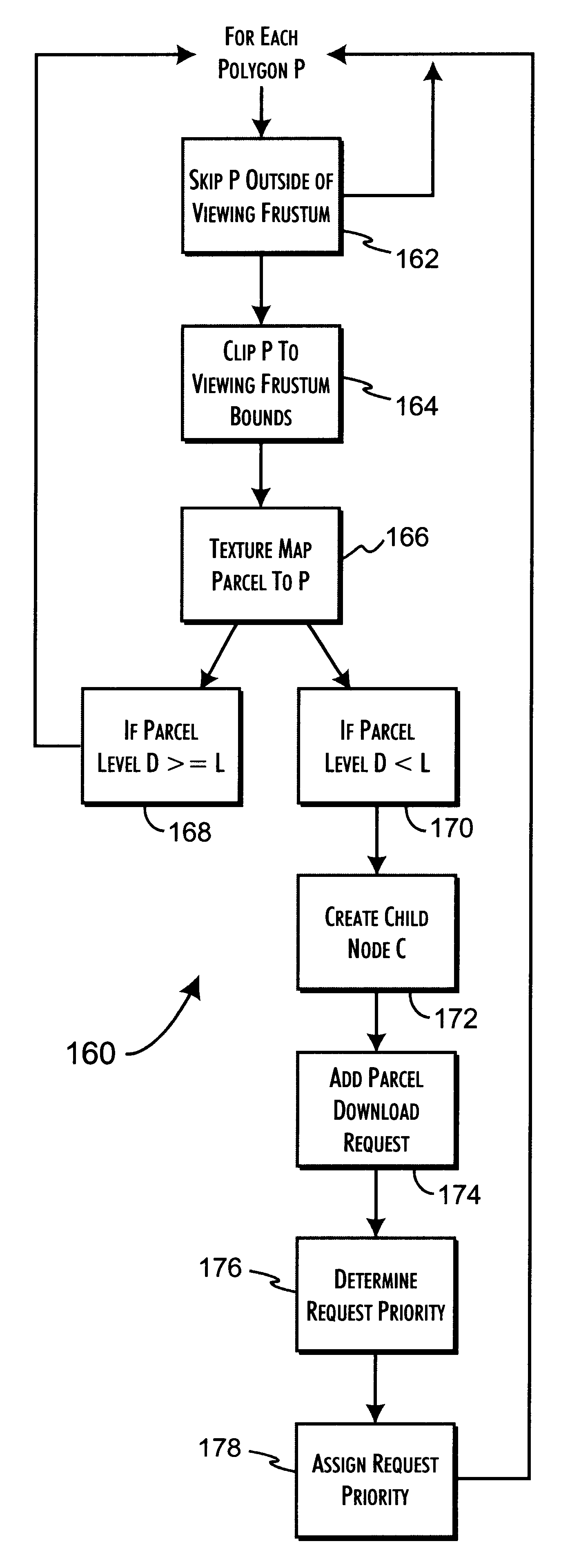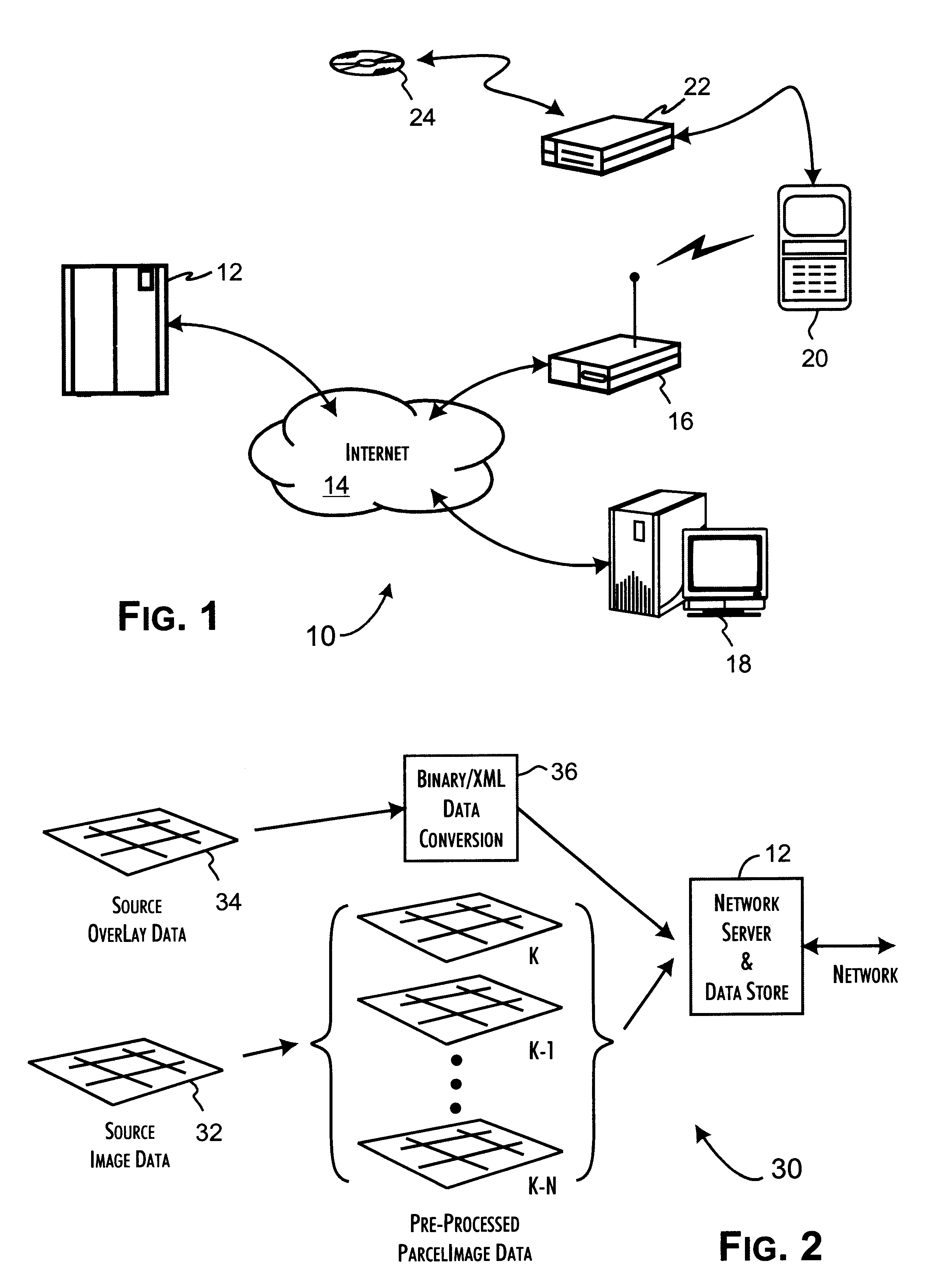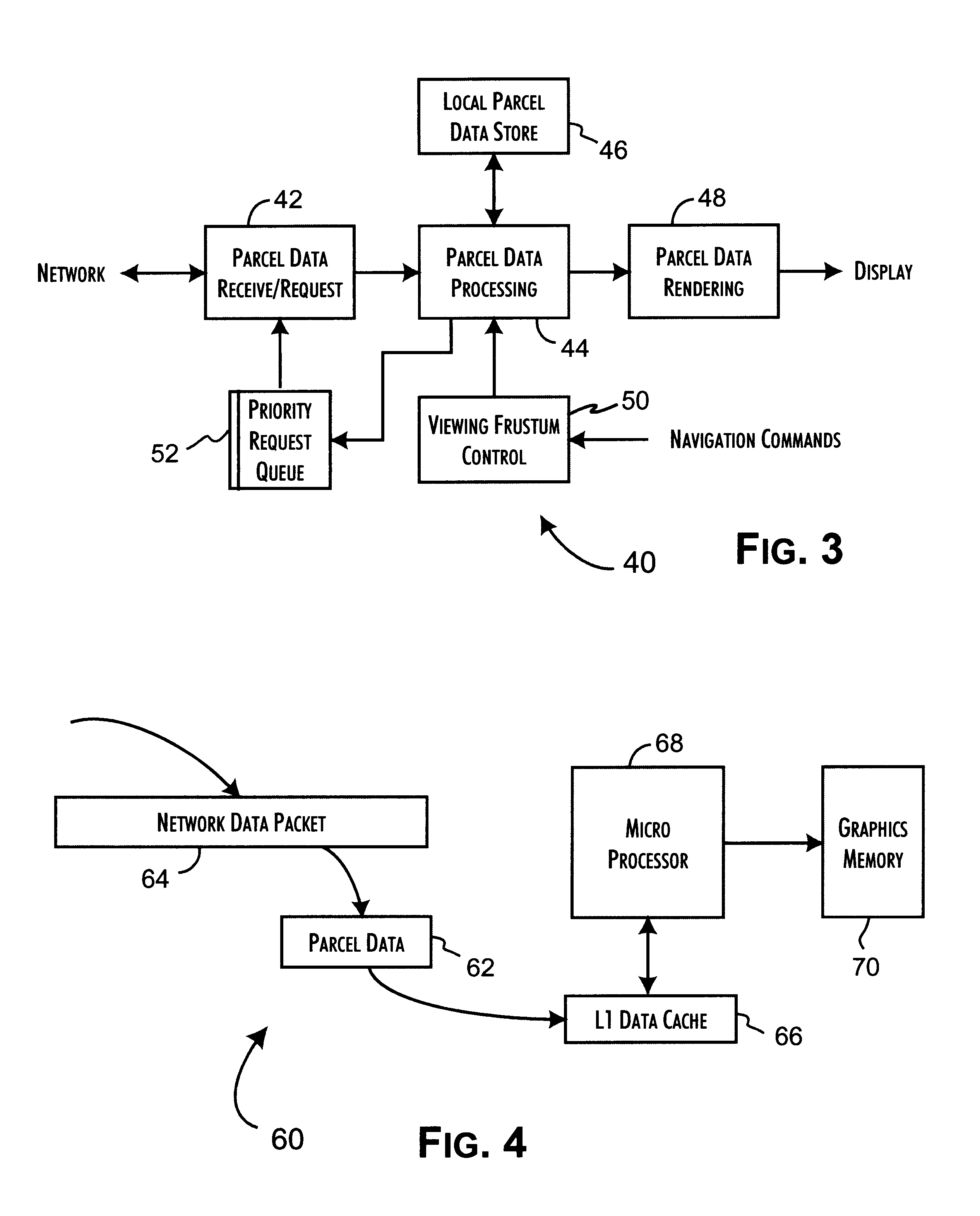Efficient image parcel texture rendering with T-junction crack elimination
- Summary
- Abstract
- Description
- Claims
- Application Information
AI Technical Summary
Benefits of technology
Problems solved by technology
Method used
Image
Examples
Embodiment Construction
[0037]While the present invention has equal applicability to multi-resolution image rendering processes implemented general independent of the nature and extent of available computing resources, the computational and memory efficiencies of the present invention are of particular utility when implemented to support the viewing of real-time rendered images in mobile, wireless, and other computing devices having characteristically limited computing performance and memory resources. Although the present invention will be described in connection with such preferred embodiments, the broader applicability of the present invention to support the real-time presentation of graphic images independent of the specific source or type of image data and by computing devices of all scales will be readily appreciated.
[0038]A preferred operational environment 10 of the present invention is generally shown in FIG. 1. A network server system 12, operating as a data store and server of image data, is res...
PUM
 Login to View More
Login to View More Abstract
Description
Claims
Application Information
 Login to View More
Login to View More - R&D
- Intellectual Property
- Life Sciences
- Materials
- Tech Scout
- Unparalleled Data Quality
- Higher Quality Content
- 60% Fewer Hallucinations
Browse by: Latest US Patents, China's latest patents, Technical Efficacy Thesaurus, Application Domain, Technology Topic, Popular Technical Reports.
© 2025 PatSnap. All rights reserved.Legal|Privacy policy|Modern Slavery Act Transparency Statement|Sitemap|About US| Contact US: help@patsnap.com



